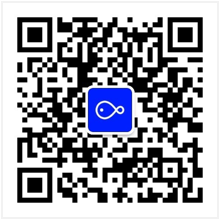DAMOYOLO-高性能通用检测模型-S
DAMOYOLO是一款面向工业落地的高性能检测框架,精度和速度超越当前的一众典型YOLO框架(YOLOE、YOLOv6、YOLOv7)。基于TinyNAS技术,DAMOYOLO能够针对不同的硬件算力,进行低成本的模型定制化搜索。这里仅提供DAMOYOLO-S模型,更多模型请参考README。
- 模型资讯

- 模型资料

模型描述
这里我们提供基于业界领先的目标检测框架DAMO-YOLO训练的检测模型:DAMO-YOLO-S。DAMO-YOLO是一个面向工业落地的目标检测框架,兼顾模型速度与精度,其训练的模型效果超越了目前的一众YOLO系列方法,并且仍然保持极高的推理速度。DAMO-YOLO引入TinyNAS技术,使得用户可以根据硬件算力进行低成本的检测模型定制,提高硬件利用效率并且获得更高精度。另外,DAMO-YOLO还对检测模型中的neck、head结构设计,以及训练时的标签分配、数据增广等关键因素进行了优化,具体细节可以参考我们的开源代码和技术报告。DAMO-YOLO-S是DAMO-YOLO提供的一系列模型中,平衡了速度和精度的最优模型之一。为了方便用户使用DAMO-YOLO完成检测任务,我们开源了多个工业应用模型,欢迎试用。

模型评测
| Model | size | mAPval 0.5:0.95 |
Latency(ms) T4-TRT-FP16 |
FLOPs (G) |
Parameters(M) |
|---|---|---|---|---|---|
| YOLOX-S | 640 | 40.5 | 3.20 | 26.8 | 9.0 |
| YOLOv5-S | 640 | 37.4 | 3.04 | 16.5 | 7.2 |
| YOLOv6-S | 640 | 43.5 | 3.10 | 44.2 | 17.0 |
| PP-YOLOE-S | 640 | 43.0 | 3.21 | 17.4 | 7.9 |
| DAMO-YOLO-S | 640 | 46.8 | 3.83 | 37.8 | 16.3 |
- 表中汇报的mAP是COCO2017 val集上的结果。
- 表中汇报的latency不包括后处理(nms)时间,其测试条件为:T4 GPU,TensorRT=7.2.1.6, CUDA=10.2, CUDNN=8.0.0.1。
使用范围
本模型适用范围较广,能对图片中包含的大部分前景物体(COCO 80类)进行定位。
使用方法
在ModelScope框架上,提供输入图片,即可以通过简单的Pipeline调用使用当前模型。具体代码示例如下:
from modelscope.pipelines import pipeline
from modelscope.utils.constant import Tasks
object_detect = pipeline(Tasks.image_object_detection,model='damo/cv_tinynas_object-detection_damoyolo')
img_path ='https://modelscope.oss-cn-beijing.aliyuncs.com/test/images/image_detection.jpg'
result = object_detect(img_path)
训练示例
DAMO-YOLO现已支持使用自定义数据训练,欢迎试用!如在使用中发现问题,欢迎反馈给xianzhe.xxz@alibaba-inc.com。
在ModelScope上使用自定义数据训练DAMO-YOLO有三个关键步骤,一个简单示例如下:
步骤一:将标签数据转换成COCO格式,COCO格式下一条有效数据的示例如下:
{
"categories":
[{
"supercategory": "person",
"id": 1,
"name": "person"
}],
"images":
[{
"license": 1,
"file_name": "000000425226.jpg",
"coco_url": "http://images.cocodataset.org/val2017/000000425226.jpg",
"height": 640,
"width": 480,
"date_captured":
"2013-11-14 21:48:51",
"flickr_url":
"http://farm5.staticflickr.com/4055/4546463824_bc40e0752b_z.jpg",
"id": 1
}],
"annotations":
[{
"image_id": 1,
"category_id": 1,
"segmentation": [],
"area": 47803.279549999985,
"iscrowd": 0,
"bbox": [73.35, 206.02, 300.58, 372.5],
"id": 1
}]
}
随后,可以将您的自定数据组织成如下结构:
├── custom_data
│ ├── annotations
│ │ └── toy_sample.json
│ ├── images
│ │ └── 000000425226.jpg
步骤二:使用默认配置文件进行训练或者自定义配置文件进行训练,训练结果将保存在./workdirs下。
- 使用默认配置文件进行训练:
此时,trainer会自动从‘damo/cv_tinynas_object-detection_damoyolo’下载模型训练所需的配置文件,并使用默认配置进行训练。
from modelscope.metainfo import Trainers
from modelscope.trainers import build_trainer
kwargs = dict(
model='damo/cv_tinynas_object-detection_damoyolo',
gpu_ids=[ # 指定训练使用的gpu
0,1,2,3,4,5,6,7
],
batch_size=2,
max_epochs=3,
num_classes=10, # 自定义数据中的类别数
train_image_dir='./data/visdrone/VisDrone2019-DET-train/images', # 训练图片路径
val_image_dir='./data/visdrone/VisDrone2019-DET-val/images', # 测试图片路径
train_ann=
'./data/visdrone/VisDrone2019-DET-train/annotations/visdrone_train.json', # 训练标注文件路径
val_ann=
'./data/visdrone/VisDrone2019-DET-val/annotations/visdrone_val.json', # 测试标注文件路径
work_dir='./workdirs',
)
trainer = build_trainer(
name=Trainers.tinynas_damoyolo, default_args=kwargs)
trainer.train() # 训练log将会保存在./workdirs/damoyolo_s/train_log.txt
- 使用自定义配置文件进行训练:
假设您有自定义的配置文件以及模型训练必须的骨干网络结构、预训练权重等文件位于"./custom",想要使用您的自定义配置文件进行训练,可以参考如下示例:
from modelscope.metainfo import Trainers
from modelscope.trainers import build_trainer
cache_path = './custom'
kwargs = dict(
cfg_file=os.path.join(cache_path, 'configuration.json'),
gpu_ids=[
0,
],
batch_size=2,
max_epochs=3,
num_classes=80,
load_pretrain=True,
pretrain_model='pretrain_weight.pth' # 指定预训练模型,该预训练模型需要放置在cache_path目录下,
# 只有load_pretrain=True,该配置才生效。
base_lr_per_img=0.001,
cache_path=cache_path,
train_image_dir='./data/test/images/image_detection/images',
val_image_dir='./data/test/images/image_detection/images',
train_ann=
'./data/test/images/image_detection/annotations/coco_sample.json',
val_ann=
'./data/test/images/image_detection/annotations/coco_sample.json',
)
trainer = build_trainer(
name=Trainers.tinynas_damoyolo, default_args=kwargs)
trainer.train()
trainer.evaluate(
checkpoint_path=os.path.join(cache_path,
'damoyolo_tinynasL25_S.pt')) # 验证模型精度
工业应用模型
我们提供了一系列面向实际工业场景的DAMO-YOLO模型,欢迎试用。请保持持续关注,更多的重磅模型即将释出!
| 人体检测 | 安全帽检测 |
|---|---|
 |
 |
| 口罩检测 | 香烟检测 |
 |
 |
模型可视化效果

引用
@article{damoyolo,
title={DAMO-YOLO: A Report on Real-Time Object Detection Design},
author={Xianzhe Xu, Yiqi Jiang, Weihua Chen, Yilun Huang, Yuan Zhang and Xiuyu Sun},
journal={arXiv preprint arXiv:2211.15444v2},
year={2022}
}




